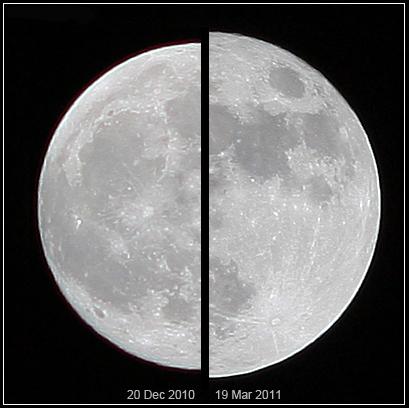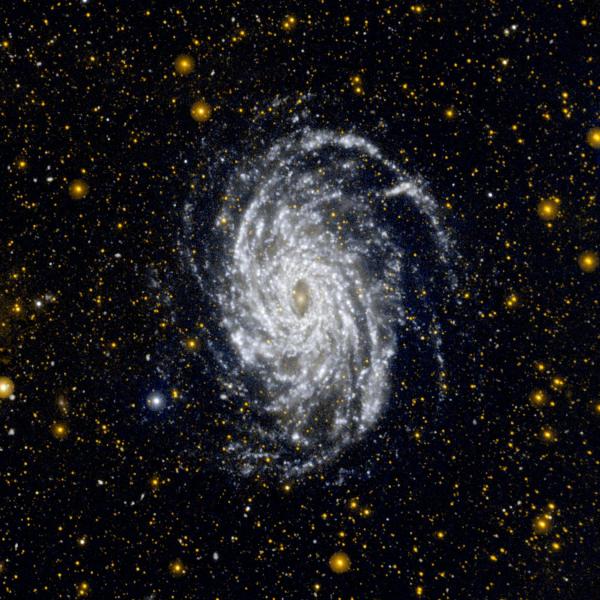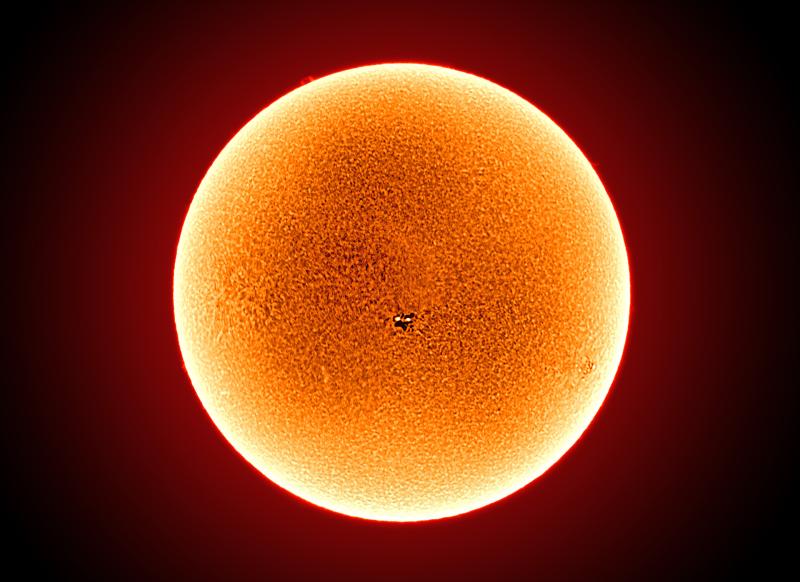
Discover what to see in August's night sky, including two supermoons, the peak of the Perseid meteor shower and some of the brightest summer stars.
Written with Elliot Preston, Work Experience Student
Top 3 things to see in the night sky in August 2023
- Throughout the month - Spot the planets
- 12 - 13 August - Catch the peak of the Perseid meteor shower
- 1 and 31 August - See two full supermoons!
(Details given are for London and may vary for other parts of the UK)
Look Up! Podcast
Subscribe and listen to the Royal Observatory Greenwich's podcast Look Up! As well as taking you through what to see in the night sky each month, Royal Observatory astronomers pick two space news stories to talk about.
In August's episode, available below, we talk about how astronomers took the first ever image of the Milky Way, not with electromagnetic radiation, but with neutrinos. We'll also discuss CHAPEA, NASA's mission that involves locking four crew members away for a year to help plan for future human missions to Mars. At the start of August, join the conversation on Twitter (@ROGAstronomers) and tell us what personal item you would bring if you were one of the CHAPEA crew members.
Our podcast is available on iTunes and SoundCloud.
The dazzling stars of August
Throughout the month, the constellation of Ursa Major, or the Great Bear, is visible just above the horizon to the northwest, containing the famous Plough asterism, which is also known as the Big Dipper in parts of North America.
If you manage to spot this familiar shape and follow an imaginary line through the two stars in the front of the pan, called Merak and Dubhe, to the next prominent star, you will find Polaris, the North Star. This star is very close to the north celestial pole meaning that if you ever get lost at night and don’t have a compass you can use it to find your bearing. If you follow the other end of the Plough, the second star along the handle is actually not one star, but two systems of multiple stars – Alcor and Mizar.
These two are an optical double and have been captivating astronomers for decades. Alcor is a binary system, and Mizar consists of four stars gravitationally bound together. The separation between the two is large enough that the pair can just be resolved with the unaided eye and they were used to test vision among many cultures in the past, but it is not clear if the two are actually gravitationally bound.
If you look upwards from Polaris, towards your zenith (the top of your sky) you will see the constellation of Cygnus, the swan. At its head is the star Deneb, a supergiant variable star which means that its magnitude is constantly changing. Nearby to this star you might find M39, a triangular open star cluster (apparent magnitude 4.6), and if you have a pair of binoculars you might be able to see the faint cloud of the Elephant’s Trunk Nebula below it.
This is an emission nebula that is now thought to be home to several very young protostars due to the compression of gas within the nebula, although these are only visible if you have an infrared filter on your telescope.
Planets to look for in August's night sky
If you're interested in planetary observation, the gas giants will dominate the night sky this month. Saturn will be visible in the east all month long and can easily be seen with the naked eye. It looks like a bright yellowish-white star that doesn't twinkle, which is what sets it apart from actual stars. If you have a pair of binoculars or a telescope handy you might also be able to see Saturn’s characteristic rings.
When it comes to telescopic observations, we recommend avoiding the first week of August, as the full Moon will be high above the horizon, outshining the planets and ruining your experience. On 1 August, Saturn will rise at 10pm, and will be joined by Jupiter a couple of hours later. Both will be visible all night long. And then, on every following day, both will rise a few minutes earlier each night.
Although too faint to spot with the unaided eye, you can catch a glimpse of the ice giants with a telescope. Neptune can be seen to the west of Saturn, and Uranus can be seen to the west of Jupiter in the later parts of the month.
Mercury, Venus and Mars can be seen around sunset towards the west, but only for the first week of August. They will be very low to the horizon so are difficult to spot. If you miss Venus, you can also catch it in the last few days of August in the very early mornings, just before sunrise!
The long-awaited Perseid meteor shower is here!
Between the 12th and the 13th of August is the peak of the Perseids, one of the best meteor showers of the year which can reach up to 100 meteors per hour under perfect conditions. This is a long meteor shower, usually beginning as early as 17 July and continuing until 24 August, so there are plenty of opportunities to watch this fantastic event.
Perseid meteors are debris from Comet 109P, also known as Comet Swift-Tuttle or the Great Comet of 1862, named when it was discovered independently by two different astronomers in the same year. Very bright meteors with a magnitude brighter than -3 are often visible during the shower, which can be seen even in areas with higher levels of light pollution.
The conditions for this year’s Perseids are especially favourable as its maximum occurs around three days before the new Moon, so the Moon's light will not outshine that of the meteors.
The Moon this month
If you enjoy lunar observation then you're in luck, as on 1 August a Super Full Moon will occur. This happens when the Moon reaches the point in its orbit when it is closest to Earth, called the perigee. Because it is a bit closer to us, the Moon looks a bit bigger and brighter in the sky. Head out to an open area where the horizon is not obstructed and look directly southeast where the supermoon will rise at around 10pm and then set in the southwest in the early hours of the morning.
While this is not the best time to observe individual lunar features as there are no shadows cast on the Moon, it can still be a spectacular sight. If you did want to take a look at some of the Moon’s famous seas or craters then why not take a look in the evening of 8 August when the Moon is in its Last Quarter phase and on 24 August when it is in the First Quarter phase. When it is in these phases the lighting angle casts long shadows on the lunar surface, making craters, mountains and other features more pronounced and easily visible.
See if you can spot the Sea of Tranquility, where the Apollo 11 astronauts landed, or the bright Tycho crater, named after the astronomer Tycho Brahe, who collected key astronomical data that helped us move towards a heliocentric model of the Solar System.
Two full Moons in August, how come?
While a month typically sees only one full Moon, the coincidental alignment of lunar cycles has gifted us with this rare occurrence. Two full Moons in a month are possible due to slight discrepancies between the lunar cycle and our calendar months. On average, it takes approximately 29.5 days for the Moon to cycle through all of its phases, while our Gregorian calendar month usually spans 30 or 31 days. Two full Moons in a month are sometimes called blue moons, however, do not expect them to turn blue at all.
The term blue moon is a bit of a mystery and its origin is unknown. It might date back to the sixteenth century when it was used to describe something impossible, or very rare. The origin might also be tied to the eruption of the Krakatau volcano in Indonesia in the eighteenth century, as people around the world reported seeing a bluish Moon following the eruption. The volcanic eruption released sulfur dioxide and volcanic ashes reached far into the stratosphere, affecting the entire world. The chemicals gave the sky a different hue, and turned the Moon as well as sunsets blue.
Moon phases for August 2023:
Full Moon: 1 August (19:31)
Third Quarter: 8 August (11:28)
New Moon: 16 August (10:38)
First Quarter: 24 August (10:57)
Full Moon: 31 August (02:35)
Stargazing Tips
- When looking at faint objects such as stars, nebulae, the Milky Way and other galaxies it is important to allow your eyes to adapt to the dark so that you can achieve better night vision.
- Allow 15 minutes for your eyes to become sensitive in the dark and remember not to look at your mobile phone or any other bright device when stargazing.
- If you're using a star app on your phone, switch on the red night vision mode.
See our range of observing equipment
Share your pictures
Do you have any images of the night sky? If so, why not share your photos via our Royal Observatory Astrophotography Facebook group.
You can also connect with us via Twitter: @ROGAstronomers
Never miss a shooting star
Sign up to our space newsletter for exclusive astronomy highlights, night sky guides and out-of-this-world events.
You may also be interested in

Visit the Royal Observatory
Header image: Statue of Liberty Nebula © Ignacio Diaz Bobillo | Astronomy Photographer of the Year 2019







